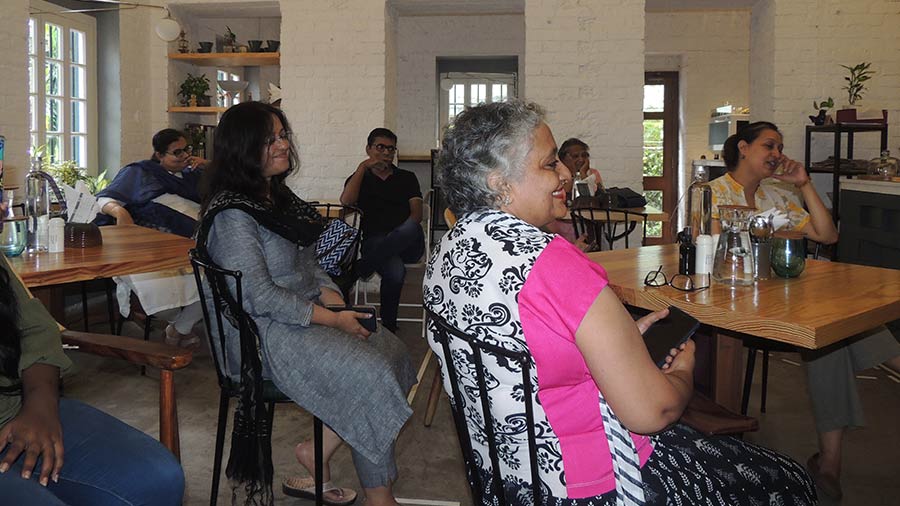Waypoint Cafe on Sarat Bose Road recently played host to another book-reading session that cut to the heart of India’s mango lore, including the use of the most sought-after summer delight to sweeten diplomatic ties with other nations over the years.
Educationist Ranjini Guha spoke about her lifelong obsession with mango as she spread out the myths and history associated with different varieties of ‘the king of fruits’ before enthralled listeners on the cloudy morning of June 26.
“It’s never too late to know more about mango. The fruit is intrinsically interlinked with our history, culture and international diplomacy. If there’s one fruit that has found its expression in food, literature, music and art, it’s mango,” said Guha, who teaches history at Gour Mohan Sachin Mandal Mahavidyalaya in Madhabpur, a place on the Lakshmikantapur-Sealdah railway line.

The audience share a light-hearted moment at the session Saurav Roy
“The history of mango began in the Indian subcontinent many centuries ago. It’s native to the region and has not travelled from abroad like pineapple. That’s why it’s the national fruit of India and Pakistan, while Bangladesh has declared the mango tree as its national tree,” she pointed out.
The first appearance of mango can be traced back through fossil evidence to northeast India, Myanmar and Bangladesh 25-30 million years ago. After a while, the fruit travelled down to southern India thanks to regional mobility.
Mango plays a prominent part in Hindu rituals as twigs of the tree are planted at house entrances and its leaves are hung across over marriage ceremonies. Both the tree and its fruit are also associated with Kama, the Hindu god of amours who represents love, longing and desire. Budhhists also revere the mango tree as Gautama Budhha is said to have meditated under such a plant.

Participants at the cafe with Ranjini Guha. Saurav Roy
Describing the special place of mango at Indian royal courts, Guha, who has also been serving as the coordinator of the US Consulate Historical Society for over two years, said the Mughals were so fascinated by the fruit that many of its varieties like Noorjehan, Kohitur, and Imam Pasand still bear the stamp of their patronage.
The tantalising tales assumed a serious note when she described how mango has been instrumental in securing diplomatic ties with other countries. She mentioned the tradition of sending the fruit to the heads of other states — a practice that had originally started at royal courts— continues to this day.
Guha said mango diplomacy still bore fruit in the international arena, citing the example of how Bangladesh Prime Minister Sheikh Hasina had sent 2,600kg of mangoes to Indian ministers, including West Bengal chief minister Mamata Banerjee.
The best, however, was saved for the last. Before signing off, Guha shared some of her homemade recipes with the audience and gave them a chance to savour her culinary skills with a big pot of mango pudding that she had prepared for the event.
